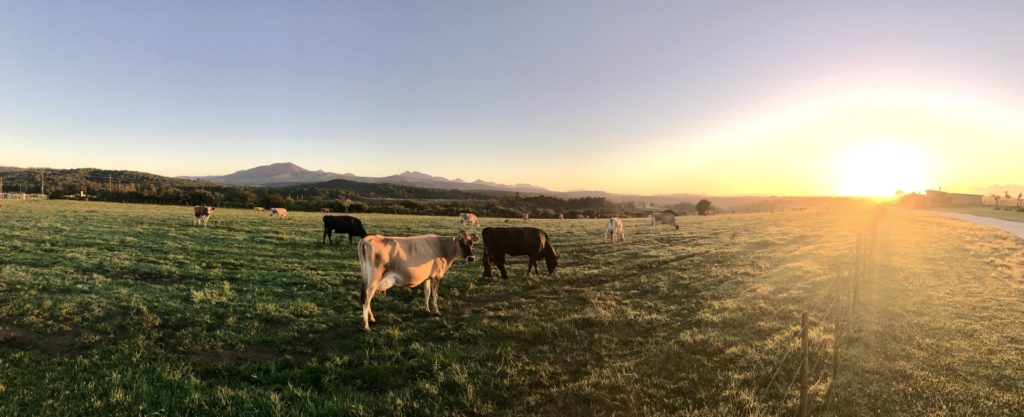The prospect of a bumper New Zealand milk production season still hangs over world dairy commodities prices, which fell a further 0.3% in the latest Global Dairy Trade auction.
The tenth fortnightly fall or pause in the GDT index extended the slump in world prices, a cumulative 15.8% decrease, to five months.
At 896 the index is lower than it has been for two years, since October 2016, when dairy prices were climbing out of a two-year trough that delivered $4/kg milksolids farmgate milk prices to NZ dairy farmers.
ASB senior rural economist Nathan Penny chopped 25c from his price prediction for the season, now $6.25/kg.
He wielded the knife because of the prolonged fall in GDT prices and his expectation NZ production will rise 4%, after three consecutive seasons of decline, to set a new record for kilograms of milksolids.
Penny said the previous record was 1.889 billion in the 2014-15 season and a 4% gain on last season will result in 1.913b this season though there has been a reduction in the number of cows by about 200,000 over the four years.
Favourable weather around the country contrasted with a poor spring last year, resulting in milk production now running 5% ahead, he said.
“Farmers are in a better position to take advantage of the better weather, cashflows are positive and farmers are beginning to put the dairy downturn behind them.”
More spending on fertiliser and animal health is paying back in higher per-cow productivity, expressed in higher milk production when feed conditions are good.
But more milk will lead to lower prices, hence Penny’s revised prediction, and a small drop in forecast seasonal farmgate income.
ASB estimated that reduction to be $240 million across the industry though farmers will still receive about $12b.
Westpac analyst Anne Boniface took a different view of the cause of slipping GDT prices, saying Fonterra’s expressed supply-side reasons for taking 25c off the forecast on October 10 were exaggerated.
While milk production in NZ is expected to grow the aggregated production in the four big dairy exporting regions (Europe, United States, NZ and Australia) is up only 1% for the past 12 months.
“The pace of growth has slowed in recent months. On a seasonally adjusted basis milk production has been broadly flat over the last three months.”
European output was affected by very hot, dry weather over summer and while it has now cooled farmers face higher feed costs that might weigh on production growth.
US milk production was up 1.1% in the 12 months to the end of August though 17% of that was made into export products, versus 14% a year earlier.
Australian milk production is being hit hard by drought and high water and feed costs are a drag on expansion of the sector.
In contrast NZ milk production is up 5.5% season-to-date but farmers are keeping a close eye on predictions of El Nino weather.
“So, on balance, we’re not so sure that soft dairy prices in recent months can be entirely pinned on strong growth in global milk supply,” she said.
Boniface will examine the demand side of world prices in a forthcoming commentary.
RaboResearch analyst Emma Higgins said the latest GDT result is not bad for farmers because whole milk powder lost 0.9%, skim milk powder was steady and fat products recovered some lost ground with butter up 2.4% and anhydrous milk fat up 1%.
She, too, observed Fonterra’s forecast of a 3% lift in NZ milk supply will, if common to all companies, result in record NZ production.
But RaboResearch is more comfortable with a 2% increase for the season because the second half (early 2019) could be constrained by weather and palm kernel restrictions.
Its prediction of $6.65/kg held firm pending the NZ peak flow results.
“Ultimately, we see milk supply growing only modestly over the coming 12 months as tight on-farm margins and lingering weather effects play out.”
NZX analyst Amy Castleton said the results of the GDT and subsequent movements on the dairy futures exchange took 15c off her forecast, now $6.18.
“While we saw some relatively positive GDT results, the price for key commodity WMP did fall and the outlook for dairy commodity prices has continued to deteriorate,” she said.
But the NZX spot price went up 17c to $6.41 and the September 2019 milk price futures contract was down 11c compared with a fortnight ago to $6.15.
If you are interested in learning more about the recent results of the GDT, watch our latest market update video here.
Article sourced from https://farmersweekly.co.nz



